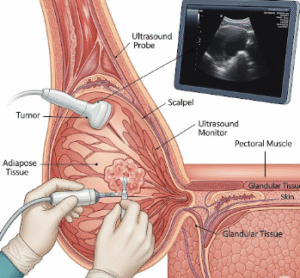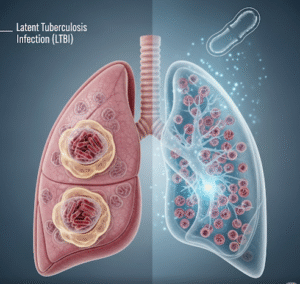Overview
Occupational asthma is a type of asthma that is triggered or worsened by exposure to substances in the workplace. It is one of the most common work-related respiratory diseases and can affect people in a wide range of industries—from manufacturing and agriculture to healthcare and cleaning services.
If not recognized and treated early, occupational asthma can cause long-term lung damage, reduce productivity, and lead to chronic disability. With early intervention, the condition can be managed or even reversed.
What is Occupational Asthma?
Occupational asthma is a form of work-related asthma caused by exposure to allergens or irritants in the workplace. The airway becomes inflamed and narrowed, leading to symptoms like coughing, wheezing, shortness of breath, and chest tightness. It can develop in individuals who previously had no history of asthma (new-onset asthma) or can worsen pre-existing asthma.
There are two main types:
- Immunologic (allergic): Caused by sensitization over time (e.g., to flour, animal proteins)
- Non-immunologic (irritant-induced): Triggered by sudden or repeated exposure to irritants like chemicals or fumes
Symptoms
Symptoms of occupational asthma may appear during work hours or after exposure and can include:
- Coughing, especially at night or early morning
- Wheezing or whistling sound when breathing
- Shortness of breath
- Chest tightness or pain
- Eye or nasal irritation (runny nose, itchy eyes)
- Fatigue or trouble breathing during physical activity
- Symptoms often improve on weekends or holidays and worsen during workdays
Causes
Occupational asthma is caused by breathing in harmful substances at work, such as:
Allergens:
- Animal dander (veterinary, lab workers)
- Plant proteins (bakery, farming)
- Enzymes (detergents, pharmaceuticals)
- Latex (healthcare)
Irritants:
- Chemical fumes (cleaning products, chlorine, formaldehyde)
- Gases and vapors (isocyanates in spray paints, adhesives)
- Dust and mold (construction, food processing)
- Metal fumes (welding, smelting)
The asthma symptoms develop due to immune sensitization or direct airway inflammation.
Risk Factors
You may be at increased risk for occupational asthma if you:
- Work in industries with chemical or dust exposure
- Have a family history of asthma or allergies
- Are a smoker or exposed to secondhand smoke
- Have pre-existing allergic conditions (eczema, rhinitis)
- Have had recent respiratory infections
- Work without proper protective equipment
- Spend long hours in poorly ventilated areas
Complications
If left untreated or exposure continues, occupational asthma can lead to:
- Permanent lung function decline
- Chronic or severe asthma
- Increased risk of respiratory infections
- Reduced quality of life or inability to work
- Missed workdays and economic loss
- Mental stress and anxiety due to persistent symptoms
In severe cases, irreversible airway remodeling can occur.
Prevention
Preventing occupational asthma involves reducing or eliminating exposure to triggering substances:
- Use personal protective equipment (PPE) like masks and respirators
- Ensure adequate workplace ventilation
- Substitute hazardous materials with safer alternatives
- Follow safety protocols and use containment methods
- Undergo regular health screenings if working in high-risk environments
- Report early symptoms to supervisors or occupational health services
- Educate workers and employers about asthma risk management
Early detection and removal from exposure can often reverse the condition.
Treatment Options in Korea
South Korea offers modern and multidisciplinary treatment for occupational asthma through specialized pulmonology and occupational medicine clinics.
1. Diagnosis
- Detailed occupational and medical history
- Pulmonary function tests (PFTs): To assess airflow limitation
- Peak expiratory flow monitoring: At work and at home
- Allergy testing (skin or blood tests)
- Bronchial provocation test: Under supervision
- Chest imaging if complications are suspected
2. Medical Treatment
- Inhaled corticosteroids: To reduce airway inflammation
- Bronchodilators (inhalers): To relieve acute symptoms
- Leukotriene modifiers or antihistamines
- Oral corticosteroids for severe flare-ups
- Immunotherapy (for specific allergen sensitization)
3. Exposure Control
- Temporary or permanent removal from the exposure source
- Workplace accommodation or reassignment to a low-risk role
- Referral to occupational health specialists
4. Pulmonary Rehabilitation
- Breathing exercises
- Education about inhaler use and environmental control
- Support groups and counseling
5. Leading Hospitals for Occupational Asthma in Korea
- Seoul National University Hospital – Department of Pulmonology and Occupational Medicine
- Asan Medical Center – Occupational Lung Disease Center
- Samsung Medical Center – Allergy and Asthma Clinic
- Severance Hospital – Respiratory Disease and Worker Health Unit
- Inje University Sanggye Paik Hospital – Pulmonology & Industrial Medicine
These centers offer:
- Comprehensive testing for work-related respiratory diseases
- Advanced imaging and lung function labs
- Multilingual services for international patients
- Workplace risk assessments and legal documentation support













